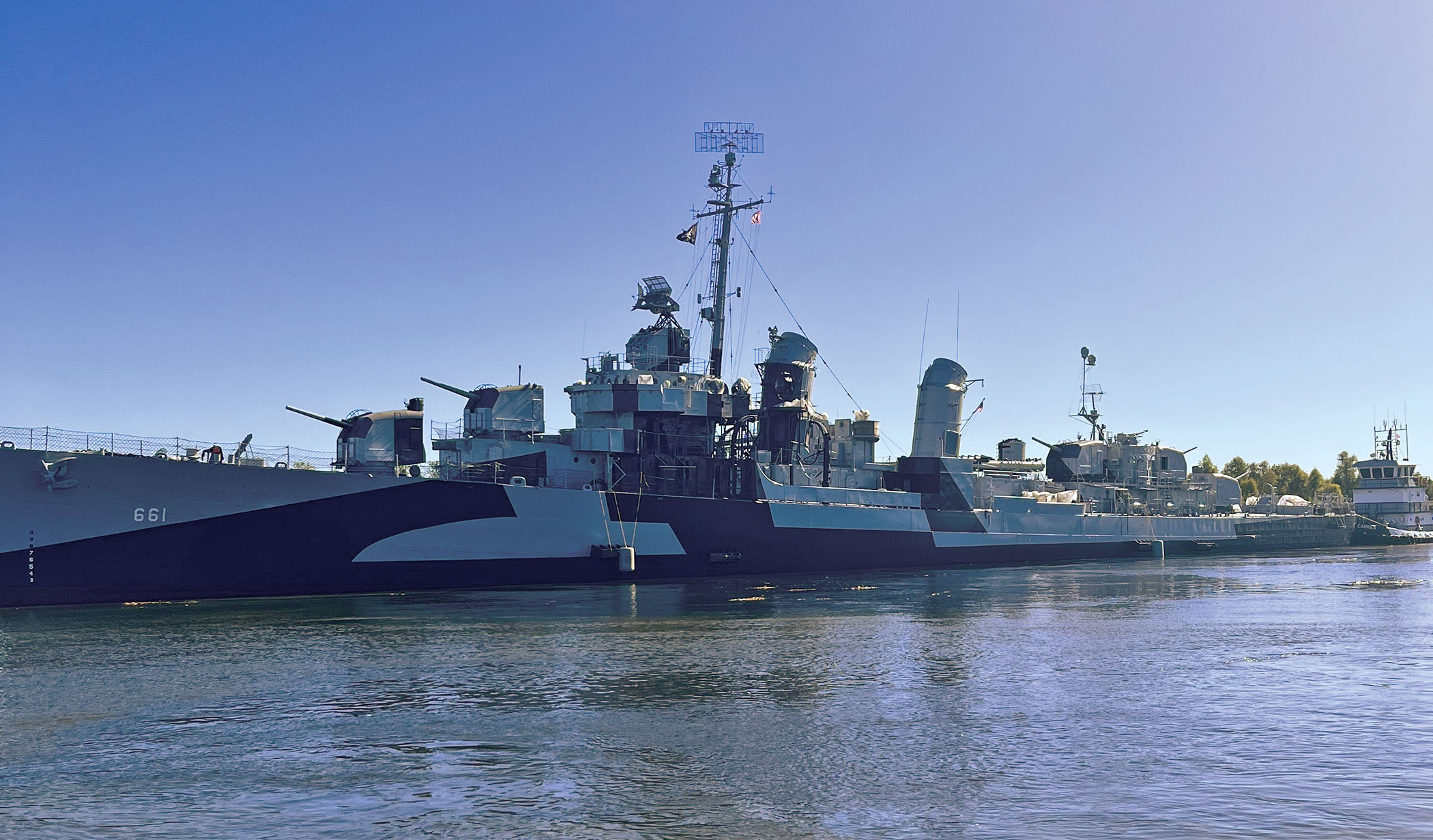By Ken Kolb
The restoration of the USS Kidd (DD-661), a World War II and Korean War Fletcher-class destroyer, has been completed, and the ship could head back home to Baton Rouge, La., during the next high-water cycle.
On Veterans Day, November 11, the USS Kidd was released back into the water from the drydock at Thoma-Sea Marine Constructors (TMC) in Houma, La. During its14 months of repair, every detail was considered, all the way down to the exact paint color of its hull, which was identified through archival research with naval historians.
Affectionately called “the Pirate of the Pacific,” the USS Kidd was commissioned in 1943 and earned 12 battle stars for its service, including surviving a “kamikaze” attack. It was designated a National Historic Landmark in 1986.
In Baton Rouge, the Kidd’s permanent berth consists of a specially engineered cradle that allows the ship to rise and fall with the height of the Mississippi River.
When the river is low, the Kidd is the only museum ship in the country that can be seen completely out of the water. Over time, however, much of the ship’s steel hull had deteriorated and needed to be replaced. Now, it is strong enough to rest in the cradle for many years to come.
Built more than 80 years ago, the Kidd originally featured a riveted structure, a technique no longer used in shipbuilding today. According to Parks Stephenson, executive director of the USS Kidd Veterans Museum, using rivets to build a ship “is a lost art in most shipyards nowadays, especially in American shipyards.”
It was because of Stephenson’s forensic work on deep-sea shipwrecks of riveted ship construction like the USS Kidd that he was recruited to help preserve the Kidd for generations to come. After retiring from a 20-year career in the U.S. Navy, Stephenson became an aerospace engineer with a side career as a deep-sea shipwreck analyst. Most famously, he served as a technical advisor for James Cameron on his explorations of the Titanic.
Later, Stephenson worked with explorer Victor Vescovo to locate and survey the USS Kidd’s sister ship, the USS Johnston. That destroyer currently rests 6,500 meters below the surface of the Philippine Sea and was the world’s deepest shipwreck at the time of her discovery.
Seeing the USS Johnston in its eerily preserved state so far below water in 2021 was a moving moment for Stephenson, so much so that he agreed to move from San Diego to Baton Rouge in 2022 to take over the USS Kidd Veterans Museum to preserve one of the last remaining Fletcher-class vessels.
“I can’t explain it, but the Johnston wreck really, really spoke to me,” he said. “I couldn’t pass up on the chance to take her sister ship and ensure that she survives.”
To restore the Kidd, Stephenson specifically chose the shipbuilders at TMC because of their willingness to work with a historic artifact. The goal of the collaboration was more than just restoring the look of the riveted hull through industry-standard welding techniques. The restoration also made the old hull more watertight. The repair team accomplished that by welding around existing rivets and welding over plating seam edges. Stephenson estimated the work has added 40 to 60 years of life to the Kidd’s hull. TMC welders were able to simulate the appearance of some rivets, which savvy observers will be able to spot above the water line.
True history buffs will still get a chance to get their hands on refurbished rivets at the gift shop, as they were reclaimed during the repair project. The original rivets are all made from steel forged before the atomic era, so-called “pre-atomic steel.”
The USS Kidd is expected to make its return journey upriver to Baton Rouge during the next high-water cycle, most likely in spring 2026. Until then, its museum will remain open with reduced entrance fees. The venue has proven to be a major attraction and engine for the local economy, producing an average of $5 million dollars of economic impact each year.
Ken Kolb, PhD, was born and raised in New Orleans. He is currently conducting research for his next book about shipping on the Mississippi River and the Port of New Orleans.
————
Featured photo caption: The USS Kidd, a Fletcher-class destroyer used in World War II and the Korean War, leaves drydock on November 11 at Thoma-Sea Marine Constructors in Houma, La., after 14 months of repairs. (Photo courtesy of the USS Kidd Veterans Museum)



